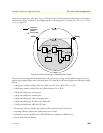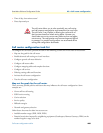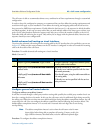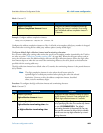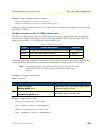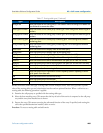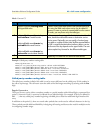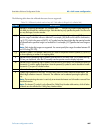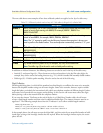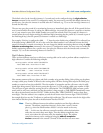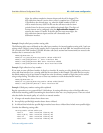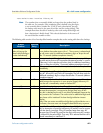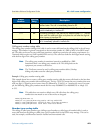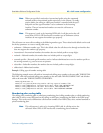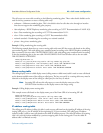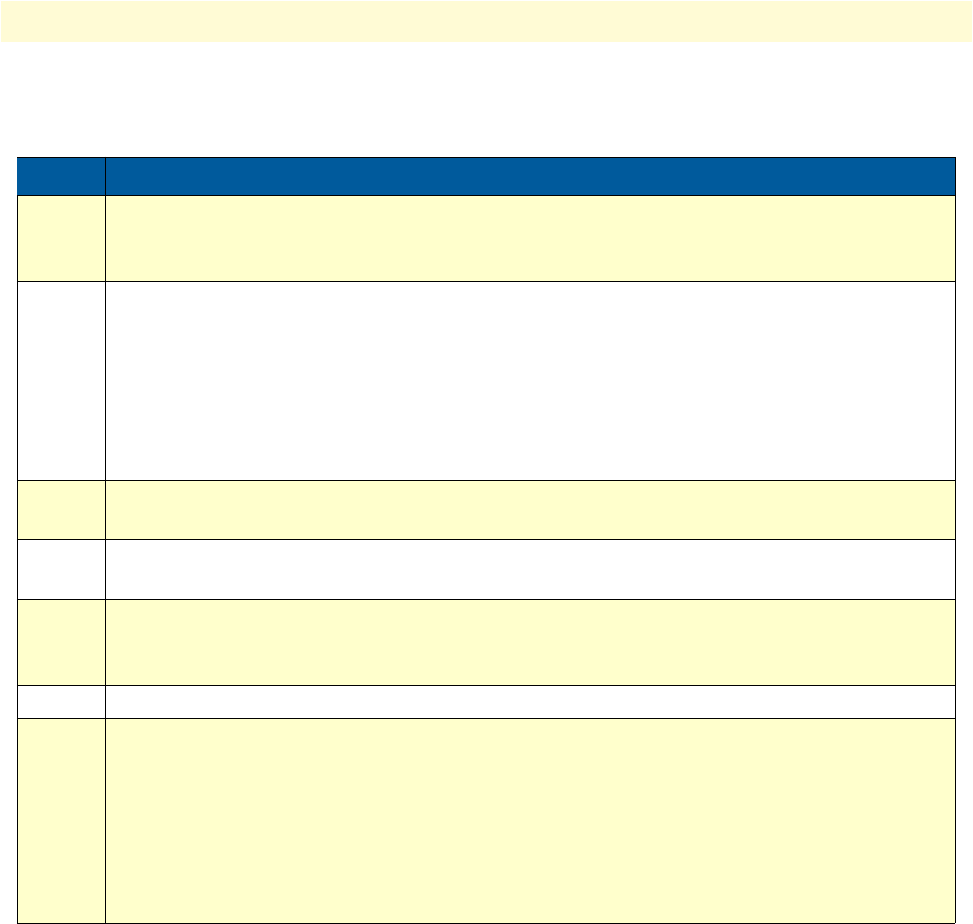
Call router configuration task list 467
SmartWare Software Configuration Guide 40 • Call router configuration
The following table shows the wildcard characters that are supported:
Table 18. Wildcard symbols used as keys in E.164 tables (calling-e164, called-e164)
Symbol Description
.
Indicates a single-digit placeholder. For example, 888 . . . . matches any dialed number beginning
with 888, plus at least four additional digits. Note that the key only specifies the prefix. Thus the num-
ber may be longer, but also matches.
[ ]
Indicates a range of digits. A consecutive range is indicated with a hyphen (-); e.g. [5-7]. A noncon-
secutive range is indicated without a delimiter. For example, [58]. Both can be used in combination;
e.g. [5-79], which is the same as [5679]. A (^) symbol may be placed right after the opening bracket
to indicate that the specified range is an exclude list. For example, [^01] specifies the same range as
[2-9].
Note: Only single-digit ranges are supported. You cannot specify the range of numbers between 99
and 102 using [99-102].
( )
Indicates a pattern. For example, 888(2525). It is used in conjunction with the symbol (?), (%) or (+)
or when replacing a number in a mapping table.
?
Indicates that the preceding digit or pattern occurred zero or one time. Enter Ctrl-V before entering
(?) from your keyboard, since the CLI normally uses the question mark to display help texts.
%
Indicates that the preceding digit or pattern occurred zero or more times. This functions the same as
the asterisk (*) used in regular expression. Here the percent (%) symbol is used to be able to handle
the asterisk (*) as part of a dialed number.
+
Indicates that the preceding digit or pattern occurred one or more times.
T
Enables digit-collection for this entry. The call router pauses to collect additional dialed digits. The
default digit collection timeout is 5 seconds. The collection can be aborted pressing the pound (#)
key.
Note: The terminating character is used only to terminate the timeout and is therefore removed from
the dialed number.
Note: The timeout (T) symbol is only allowed for Called Party Number table entries, while all other
wildcards are also allowed for Calling Party Number tables.



